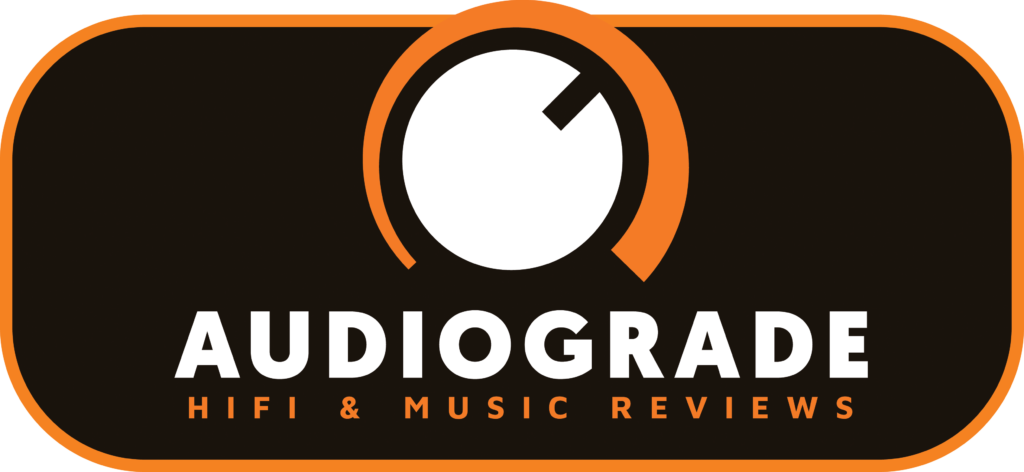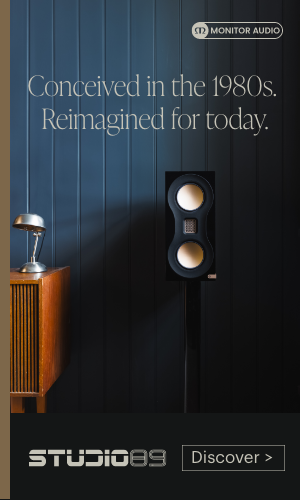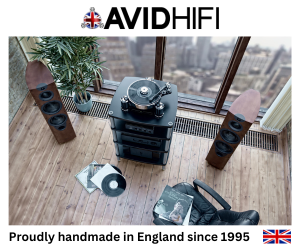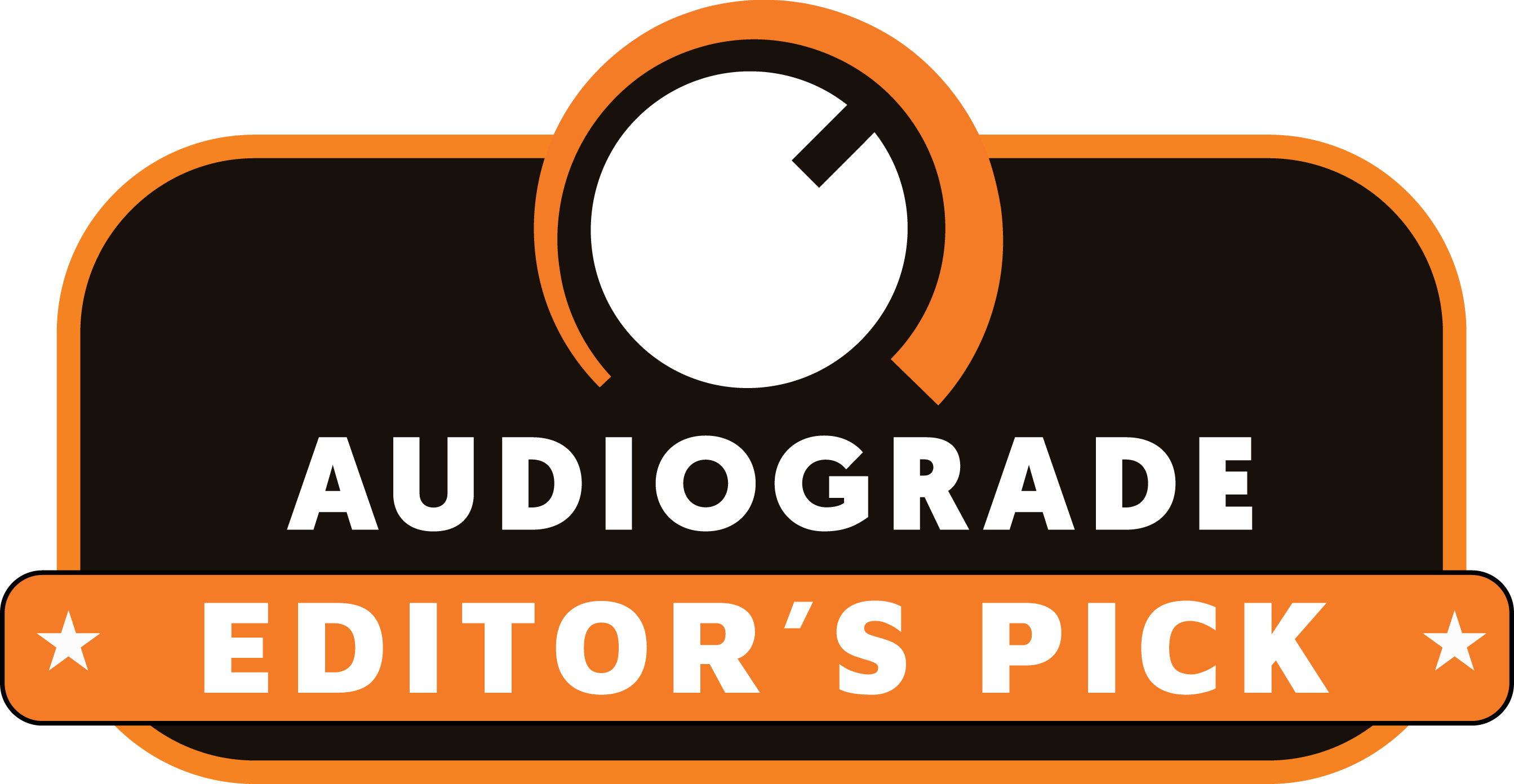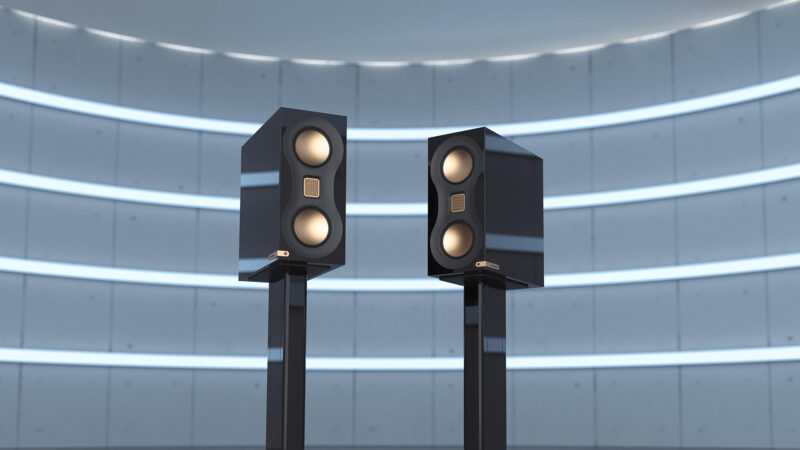Some hifi ranges become so well established that they define themselves as brands all of their own. And with its roots stretching back almost 30 years, Roksan’s Caspian has morphed into exactly this, with a cult and loyal following, thanks to the range’s unique styling and more importantly, standout sonics.
As the flagship series in Roksan’s electronics arsenal (sitting above the Attessa, Blak and K3 lines) with all of its heritage behind it, Caspian has a lot to live up to. So with Roksan under its new Monitor Audio group owners, launching an all new integrated model alongside a streaming integrated version to kickstart a new era for the Caspian sub-brand means there’s a lot of reputation at stake.

Also available in black, like its cheaper Attessa range Caspian’s styling marks a new direction for Roksan
Time for change
In truth though this range has been ripe for a refresh for some time, as the current M2 models that these will replace stretch back over a decade, with their styling going back even further to the first range from the late nineties.
And while their retro looks have appealed to many over the years, those were different times and I’ve always found the outgoing range easier on the ear than the eye, with their angular quirky front panels feeling a little outdated in the current age of touchscreens and sleek fascias.
So when we first clocked eyes on the new Caspian 4G models, we breathed a collective sigh of relief to see much of its design language taken from the recently updated Attessa range, which we got on so well with when we reviewed the streaming integrated model last October.

Caspian casework is similar in style to the Attessa line, but with a substantial hike in quality being hand-built in the UK. Note the 6mm thick one-piece front panel and top plate, hewn from solid alluminium
This means much more sophisticated casework that’s hand-built in the UK (in Rayleigh, Essex to be exact) with a central multi-use control dial with backlit OLED icons for inputs and settings, making it much easier to operate and see.
So far two models have been announced, with the Integrated model on test here at £3,000 and a networked integrated at £4,000 that adds BluOS multi-room hi-res audio streaming.
While £3k may seem a bit of a price hike compared to the outgoing Caspian integrated which retails at around £2,325 it’s clear where the extra investment has gone. Firstly there’s the casework, which put simply, is on a different level compared to the older models, with finely sculptured thick alloy making it a delight to see and touch from every angle, without a screw head in sight.
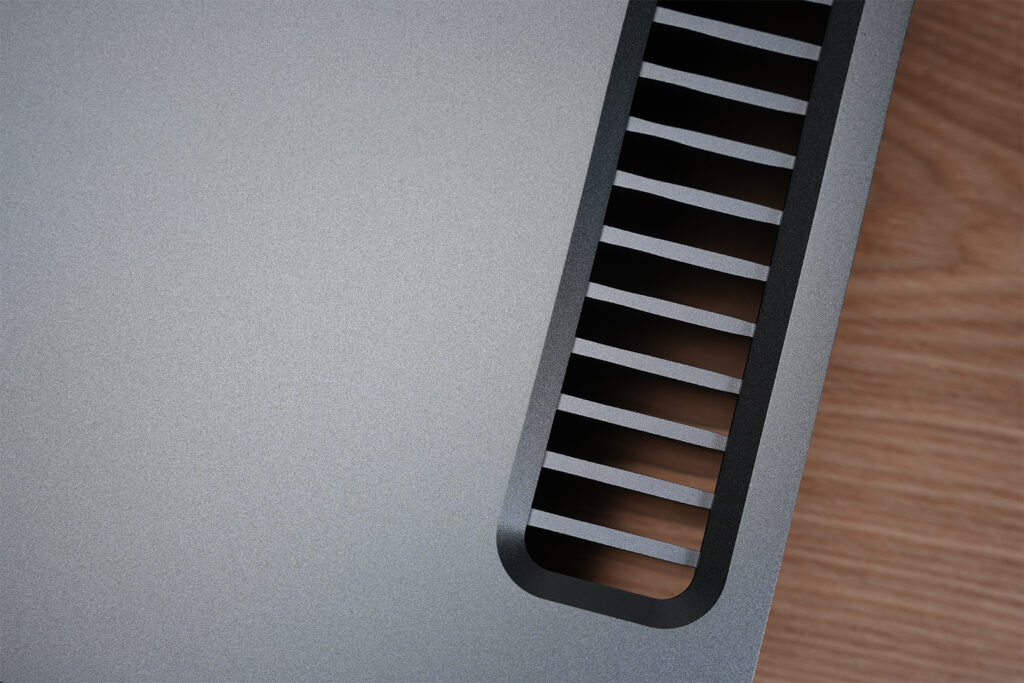
Top panel left and right heatsinks are expertly incorporated into the Caspian’s casework, adding to its design flair
Affordable flagship
Then there’s the internals, which increases power output from 85W into 8 ohms (125W into 4 ohms) from the older model to 105W into 8 ohms (200W into 4 ohms) for the new variant. It also gets a cutting edge DAC within its casework too, making it much more of a consummate allrounder. And when you consider its price compared to MOON’s analogue-only North Collection 641 (£11k) or Rotel’s Michi X3 S2 integrated (£6k) both of which we recently tested, the Caspian starts to make a strong case for itself.
Its increase in power comes from Roksan’s proprietary ‘Euphoria’ intelligent Class AB amplifier tech, which uses two separate and bespoke power supplies for signal voltage and current, so that the former can drive the speaker to the required level, while the latter ensures low impedance demands are easily met, meaning that its performance remains un-compromised, irrespective of load.

Embossed top panel branding is more discreet than many rivals while reminding you of the Caspian legacy
It’s dual mono power amp design is fed from a 600VA toroid with 36,400uF of smoothing capacitance per rail, driving Toshiba output devices with three 2SC5200 n-type and three 2SA1943 p-type per channel, bolted vertically to each of the amp’s left and right heatsinks. These are married to a fully balanced preamplifier stage with a ground switching input that’s an enhanced version of the one inside the Attessa model.
This means that on the input side, alongside two sets of line-level analogue RCA sockets there’s also a balanced set of XLRs. The third set of analogue inputs is for moving-magnet equipped turntables, with gain set at 53dB, adjustable by 6dB in either direction. There’s no moving-coil option, although at this level I’d be expecting to use a standalone phonostage when partnering with a hi-end vinyl spinner.

Large toroidal transformer at the amp’s centre feeds left and right power amp boards bolted to each channel’s heatsink
On the digital side you get two coaxial (up to 24-bit/192kHz) and two optical (up to 24-bit/96kHz) inputs alongside aptX Bluetooth, feeding the brand’s proprietary dual mono Rapture DAC which eschews traditional op-amp ICs for its differential current-conveyor topology, boasting Roksan’s ‘LVDS’ (low-voltage differential signalling) and a network of matched transmission lines for better digital signal integrity.

Caspian’s rear panel is nicely laid out with a well judged spread of analogue in/outputs (with balanced and single-ended on offer) alongside optical and coaxial digital inputs. WiFi (for updates) and Bluetooth antennas are kept hidden for a cleaner look
Read our exclusive Q&A with Roksan’s Electronics Design Director Jon Green on what’s gone into the new Caspian range.
Above and beyond
Lifting the Caspian from its nicely branded box and protective cloth bag reveals a very finely made bit of kit. If the Attessa was Roksan’s Range Rover, then this is the refined Overfinch equivalent, with higher quality materials and finishing, illustrated by the casework being of a similar size yet 50% heavier at 15kg (compared to the Attessa at 10kg).

Mono colour OLED display presents selected input and its settings on the left of the centre dial with current volume on the right, denoted by a range of vertical lights
The slatted side cheeks and flowing lines around the control panel add a nice level of sophistication, while the multipurpose control/volume dial is expertly finished. And it’s not just there for style, as sitting behind its smooth operation lies a hybrid digital-analogue volume control, with discrete sections and a custom algorithm to remove distortions inherent in many volume chips. Each stereo channel is also kept separate, to reduce cross talk.
A quick depress on this powers up the unit, while pressing and rotating simultaneously selects inputs, and rotating without depressing reverts to volume mode.

Branded remote is functional and operates as a gateway into deeper menu settings
For a deeper level of options you’ll need the supplied remote, and a tap on its three-dotted menu button gives you options for auto power on/off, a 20min/off auto standby function plus standby plus to wake/sleep a matching Roksan system, balance control and individual low/mid/high sensitivity settings in 6dB increments across all analogue inputs. There’s also an option to deactivate the power amp section when running the Caspian as a dedicated preamp, plus AV bypass mode.
Roksan excellent MeastroUnite app is also being expanded to control the Caspian integrated, bringing with it firmware updates, output configuring for subwoofer setups, disabling unused inputs and adding extra power amps plus DSP settings, with intelligent room boundary control.
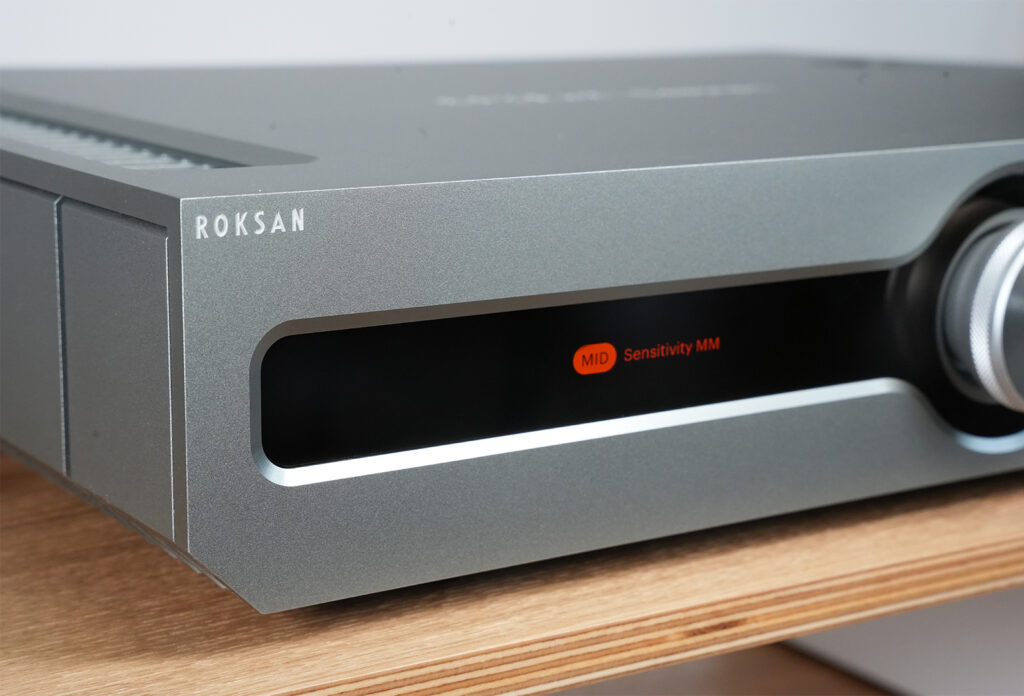
Moving-magnet turntable input is a useful inclusion, with a trio of gain settings for cartridge tailoring
Performance
With the Caspian offering so much versatility, it’s ripe for testing across my main and second systems, comprised of Primare NP30 DAC/NP5 Prisma Mk2 streamer, Dynaudio Evoke 50 loudspeakers and SME Model 20/Avid Nexus turntable for the former, and Cambridge Audio AXN10 streamer, with Dynaudio Emit 20 speakers for the latter.
Letting the amp run in for a few days before proper listening reveals its casework gets nice and warm to the touch, highlighting its Class AB internals are in full flow and ready to be put through their paces.
What’s apparent across both systems is a sense of finessed energy that the Roksan brings to the music. The sonic dynamism that has set the Caspian range apart for decades is there in spades, more so perhaps than compared to the last generation, but added to this is greater power and control.
London Grammar’s House from their latest The Greatest Love album fed into the Caspian’s balanced inputs via the Primare digital gear sets the blueprint for the amp’s performance. The soundstage is vast – especially width ways – yet packed with detail that’s there to be discovered rather than forced at you. Allow yourself to focus on the way the Roksan images those swirling synth notes and its all to easy to get lost in the mix.
Moving on to the following track, Fakest Bitch, illustrates how well this amp delivers across changing tempos and moods. Hannah Reid’s earnest vocals and softly strummed guitar are delivered with convincing levels of vulnerability yet with depth and rich texture, which is further underlined in how the Roksan renders and controls the deep bass which comes in midway through the track. With amps offering lesser control, the lower frequencies on this track can easily stray into bass bloom territory, especially via my large floorstanding Dynaudios with their massive rear ports, and the Roksan lets them reach low, but without the unwanted overhang.
The amp’s sensitivity settings are also put to good use here, in my larger (30sqm) listening space driving the Evoke 50s with their 4 ohm load / 87dB sensitivity, the Caspian’s ‘high sensitivity’ input setting is my preference, allowing the amp to drive the room without winding the wick right up. However in my 12sqm living room with the Emit 20s (6 ohm/85dB) doing their thing and the medium setting is my preference.
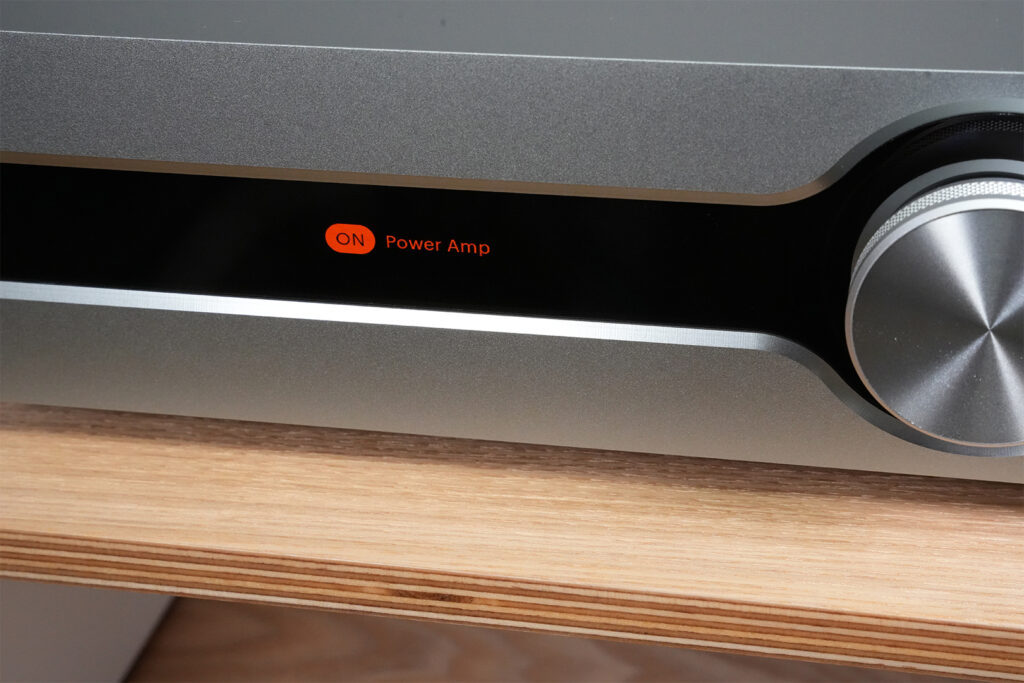
Disabling the power amp section means the Caspian 4G can operate as a dedicated preamp, allowing for upgrades and system building – a future Caspian power amp perhaps?
Plugging the NP5 network player directly into the Caspian’s DAC via its coaxial input shows that equal attention has been paid to the Roksan’s digital circuitry. Hear the start stop nature of Kashmir by Marcin at 24-bit/96kHz (FLAC, via Qobuz) and try not to be gripped by the levels of instrument separation, pinpoint imaging and air sucking bass from the Caspian, that makes for a truly arresting listening experience.
Again there’s that sense of energy and dynamics to the music without it erring on brightness or sounding too polished, which is testament to its composure in the midrange, while the sense of power underpinning the track hints at much more Watts coming down the track than the Caspian’s spec sheet suggests.
The Caspian’s moving-magnet phono stage is also worthy of praise, and this being a Roksan, whose roots stem from hi-end vinyl replay, I’d expect nothing less. Spinning up Ásgeir Trausti’s 2012 LP Dýrð í dauðaþögn and it’s time to sit back and soak up the mellow vibes. Despite being fed by a vinyl front end costing well into five figures, there’s no sense of the Caspian’s phono stage sounding over stretched or out of its depth. And when scrolling back through my listening notes across my time with the Caspian 4G, it’s notable that vinyl was my main listening medium when just enjoying what this amp can do.
In summary
This new 4G model sets the standard for integrated amps in the sub £5k bracket, making it a worthy and fitting successor to carry on the Caspian mantle. With its unique yet modern and elegant styling, it shows that British made hifi can more than compete with anything built beyond these shores.
On a purely practical level it’s easy to use, live with and grow a system around making it a future proof investment, but these attributes only stack up if they’re matched in the sonic stakes and thankfully, this is where the Roksan really excels.
With its effortless dynamics, sense of realism, drama and control, I can think of few amps I’ve enjoyed listening to as much as the Caspian 4G of late, and all with price tags well north of the Roksan, showing how great value it is. ‘Affordable reference’ is perhaps the best way to sum up what Roksan has achieved with the Caspian 4G, and for that it should be celebrated.

